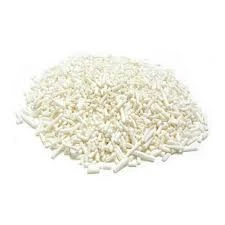
e110 food additive
Understanding E110 A Common Food Additive
Food additives play a crucial role in modern food production, ensuring products remain safe, appealing, and flavorful. Among these additives, E110, known as Sunset Yellow FCF, is a synthetic dye that has carved a niche in the food industry. This article aims to explore the characteristics, uses, potential health concerns, and regulatory status of E110.
What is E110?
E110 is a water-soluble azo dye predominantly used for coloring food and beverages. It is recognized for its vibrant yellow hue, making it a popular choice in various consumer products. This food additive is often found in items such as confectionery, soft drinks, baked goods, and even some savory products.
The chemical structure of E110 comprises multiple aromatic rings, which give it its distinctive color. As a food additive, E110 is commonly used to enhance visual appeal, suggesting freshness and flavor. Food scientists favor E110 because it maintains stability under various processing conditions, providing effective coloring without significant degradation.
Uses of E110
E110's presence can be detected in a wide array of products. For instance, it is often used to impart a cheerful yellow hue to candies, gelatins, and snacks, making them visually attractive to consumers, especially children. Additionally, E110 can be found in drinks, particularly those marketed towards younger audiences, where bright colors are part of the marketing strategy.
Moreover, E110 is utilized in cosmetics and pharmaceuticals, as it serves as a coloring agent in a variety of products, from lipsticks to vitamins. Its versatility makes it a valuable compound in both food and non-food industries.
Health Concerns
e110 food additive

Despite its widespread use, E110 has raised concerns regarding its health implications. Some studies have linked the consumption of synthetic food colors, including E110, to hyperactivity and other behavioral issues in children. In particular, the food dye has been scrutinized for potentially exacerbating symptoms in children diagnosed with Attention Deficit Hyperactivity Disorder (ADHD).
In response to growing health concerns, various countries have implemented regulations on the use of food dyes. The European Union, for example, mandates labeling for products containing E110, advising consumers that it may have an adverse effect on activity and attention in children. This careful approach reflects the balance between consumer choice and safety considerations.
Regulatory Status
E110 is authorized for use in many regions, although its regulatory status varies. In the United States, the Food and Drug Administration (FDA) considers E110 safe when used in accordance with established guidelines. The FDA has set specific limits on its concentration in food products, ensuring that levels remain within safe boundaries.
Conversely, the European Food Safety Authority (EFSA) conducts comprehensive assessments before approving food additives like E110. This includes evaluating potential health risks based on available scientific research. Such assessments have led to strict regulations in the EU, which may limit or ban certain food colors entirely, reflecting a precautionary principle in public health.
Conclusion
E110 serves as a testament to the complexities surrounding food additives in our daily diets. While its vibrant coloring capabilities add aesthetic value to many beloved products, it is essential for consumers to remain informed about its potential health implications. Recognizing the importance of regulations and ingredient labeling empowers individuals to make responsible choices optimizing both enjoyment and well-being.
In summary, E110 highlights the dual nature of food additives — enhancing our culinary experiences while also necessitating careful scrutiny to ensure public health safety. As research continues to evolve, so too will consumer awareness and regulatory standards, guiding the future of food additives in our ever-changing dietary landscape.
-
Understanding Synthetic Rubber OptionsNewsApr.27,2025
-
Trichloroisocyanuric Acid: Essential for Clean and Safe WaterNewsApr.27,2025
-
Sodium Dichloroisocyanurate: Key to Safe Water TreatmentNewsApr.27,2025
-
Sodium Acid Pyrophosphate: Essential in Modern Food ProcessingNewsApr.27,2025
-
Essential Water Treatment ChemicalsNewsApr.27,2025
-
Denatured Alcohol and Its Industrial UsesNewsApr.27,2025
-
The Versatile Uses of Sodium BicarbonateNewsApr.24,2025
Hebei Tenger Chemical Technology Co., Ltd. focuses on the chemical industry and is committed to the export service of chemical raw materials.
-

view more DiethanolisopropanolamineIn the ever-growing field of chemical solutions, diethanolisopropanolamine (DEIPA) stands out as a versatile and important compound. Due to its unique chemical structure and properties, DEIPA is of interest to various industries including construction, personal care, and agriculture. -

view more TriisopropanolamineTriisopropanolamine (TIPA) alkanol amine substance, is a kind of alcohol amine compound with amino and alcohol hydroxyl, and because of its molecules contains both amino and hydroxyl. -

view more Tetramethyl Thiuram DisulfideTetramethyl thiuram disulfide, also known as TMTD, is a white to light-yellow powder with a distinct sulfur-like odor. It is soluble in organic solvents such as benzene, acetone, and ethyl acetate, making it highly versatile for use in different formulations. TMTD is known for its excellent vulcanization acceleration properties, which makes it a key ingredient in the production of rubber products. Additionally, it acts as an effective fungicide and bactericide, making it valuable in agricultural applications. Its high purity and stability ensure consistent performance, making it a preferred choice for manufacturers across various industries.











